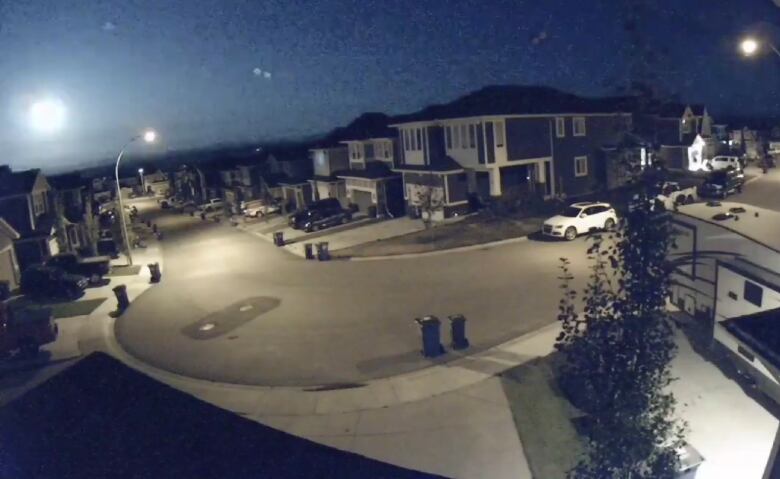Why the quest for a recent meteorite won't start with a burning trail through the woods
Scientist Alan Hildebrand explains why it won't be easy before he hunts rock from Monday night's fireball

It might not be a needle in a haystack, but a University of Calgary associate professor has his scientific sights set on finding a rock nestled somewhere in the mountain wilderness of southeastern B.C.
Not just any rock, either.
Alan Hildebrand is searching for few good chunks of the meteor that was spotted streaking across the Western Canadian skies Monday night, setting off an avalanche of social media buzz.
On the Calgary Eyeopeneron Wednesday, Hildebrand, who recovered pieces of the Buzzard Coulee meteorite in Saskatchewan in 2008, said the reality of meteorite hunting is quite a bit less romantic than some would make it out to be.

The first step, he explained, isto chase down eyewitnesses.
"You need to somehow triangulate where you think you should be looking," he said. "Once you get close to the area where you think things have fallen, of course you look for people who were very close. Witnesses can't be exact in terms of precise angles, but with enough nearby people, you can refine the search area, too."
The complicating factor with Monday night's meteor, he explained, is that it appears to have landed in a remote area of the Kootenays.
"The guesstimate at this timeis west of Slocan Lake and east of Arrow Lake. So in between those twobig lakesthere's a mountainous andforested area without very many people in it," he said.

Hildebrandalso extinguished any notions that a blazing meteor arrives on the ground by burning aninferno through a thicket of forest, like it might ina Hollywood movie.
"When you see the bright light streaking across the sky, the outside part of the rock is very hot then," he said."The surface of the rock is melting and that's hot, butthey stop let's say 20 or 30 kiometres above the ground and the layer of molten rock that's left on the surface is only less than a tenth of an inch thick [2.54 millimetres].
"Then, of course, they fall throughthe air for a couple of minutes, so that hot part gets cooled off. So they're just lumps of rock thumping the ground.
"I wish that's the way it happened," he said. "If they were that destructive, and got to the ground andstarted fires or something, you could just go to where the fire started andfind the rock. But no they're just rocks falling through the air."
Racing to beat the rain
Hildebrandsaid the scientific stakes were high enough that the risk-reward made it worth searching for rocks in the mountains.

"We'll give it a shot.," he said. "The science stakes are significant. We don't really know what kind of rock it is."
The other complication is that a lot of those scientific stakes relate to minerals on the surface of the meteorite chunks, which means he has to find the space rocks before rain washes them off and rain is in the forecast soon.
"We will collect them carefully and then study it," he said. "The thing about trying to finding it before it rains on it is there are some minerals in a meteorite which are soluble in the water, which you can find in them if you recover them very quickly.
"It's not supposed to rain until Friday out there," he said,"so we have a shot of finding it and recovering it. So we'll see what happens."
Competing with amateur meteorite hunters
Hildebrand isn't too concerned about competing with amateur meteorite hunters, some of whom may hope to sell chunks of the recovered meteorite to collectors.
"I'm sure there's lots of people out there who are interested and lots of the people who may have seen it [Monday night] have gone out andstarted looking. But I don't know of anyone who hasdone this beforewho's going out there trying.
"It's possible someone has found a piece," he added,"but certainly not possible they've found all of it.
"Like I say, there are hundreds or thousands of rocks down [on the ground], so they could not have found them all that fast."
With files from theCalgary Eyeopener












_(720p).jpg)


 OFFICIAL HD MUSIC VIDEO.jpg)
.jpg)



























































































